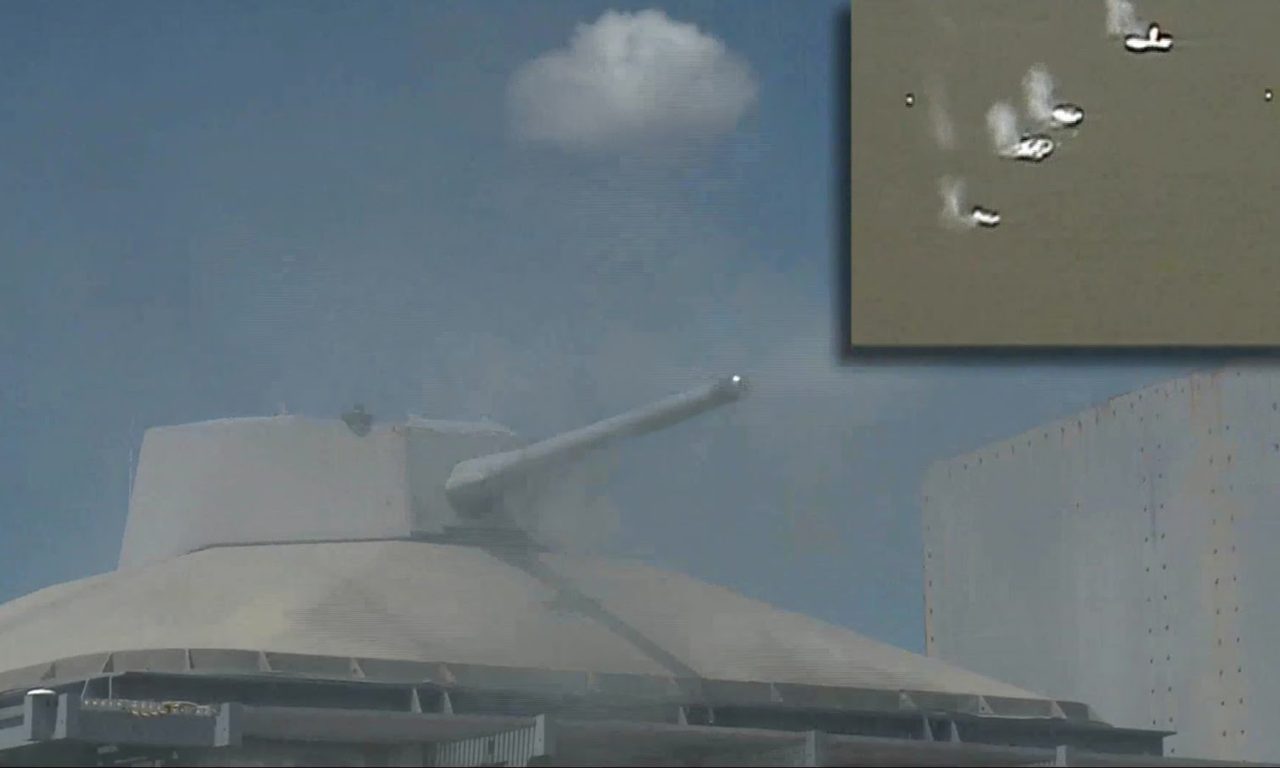Video footage featuring the Navy’s evaluation of a strike group’s gun weapon systems, combat systems, and unmanned vehicles’ interoperability with surface and air assets while firing on targets at the 2016 USS Dahlgren demonstration, Aug. 30.
It was the first time an entire Navy strike group was brought together in a land-based environment spanning the entire kill chain – plan, detect, control, engage and assess.
“This demonstration integrated capabilities across multiple laboratories, utilizing unmanned and manned sensor platforms, engaging a hostile swarm threat of surface craft attacking a virtual naval battlegroup consisting of a Nimitz class aircraft carrier, an Aegis class cruiser and an Independence class Littoral Combat Ship,” said Neil Baron, Naval Surface Warfare Center Dahlgren Division (NSWCDD) distinguished scientist for combat control.
At one point, senior Navy officials – flag officers, commanding officers, and two-dozen senior executives – watched engineers fire a 30 millimeter gun on the Potomac River Test Range from their Littoral Combat Ship’s (LCS) – Surface Warfare (SUW) Mission Package Command and Control laboratory several miles away.
“This event brings it all together,” said Rear Adm. Tom Druggan, NSWC commander. “We have to field systems that are a slam dunk win for the Navy. When push comes to shove, the Navy has to win. Our job is to make sure the fleet wins today and in the future.”
The test – made possible by a cybernetic laboratory called USS Dahlgren – conducted engagement coordination with virtual and hardware representations of systems on the USS John C. Stennis (CVN 74), USS Bunker Hill (CG 52), and USS Independence (LCS 2) during live fire destruction of surface threats utilizing the LCS 30 millimeter, Aegis MK 46 gun system’s 5-inch guns, and simulated hellfire missiles.
“This has been five to six years in the making and couldn’t come at a better time as we see real-world events such as the recent small boat incursions in the Middle East, highlighting the need for the Fleet,” said Capt. Brian Durant, NSWCDD commanding officer.
Druggan, Durant and their counterparts watched as actual combat system equipment from the aircraft carrier and two surface combatant laboratories directed live fire on the Potomac River Test Range as fictitious surface threats attempted to attack.
The live fire engagements continued throughout the scenario, demonstrating integration of currently fielded capabilities, from MH-60R and MH60S Seahawk helicopters to the Aegis Combat System and the Ship Self-Defense System with new technologies such as Virtual Automatic Scoring System.
